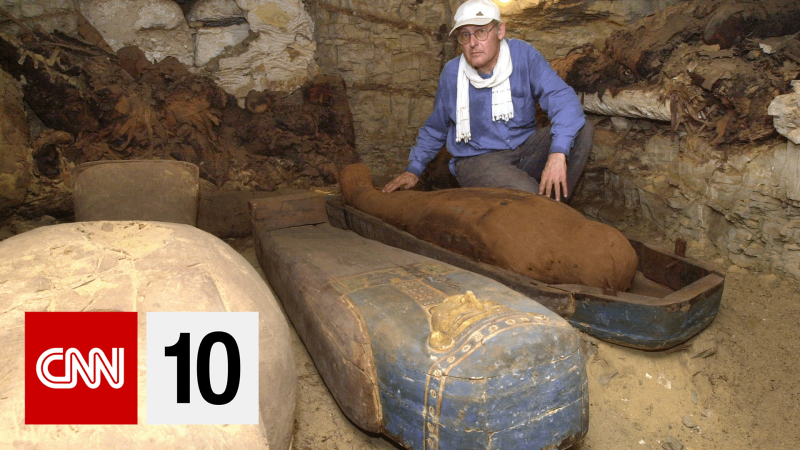This week on CNN10, scientists have embarked on a groundbreaking journey to explore the olfactory dimensions of ancient Egyptian mummies. By analyzing the scents preserved within these historical artifacts, researchers aim to unlock new insights into the lives and practices of ancient civilizations. This innovative approach is part of a broader trend in archaeology to employ unconventional methods to deepen our understanding of the past.
The initiative to “smell” mummies comes at a time when traditional archaeological methods are being supplemented with cutting-edge technology. Researchers are employing advanced chemical analysis to identify and replicate the aromas that have been trapped in the wrappings and embalming materials of mummies for thousands of years. This endeavor not only seeks to enrich our historical knowledge but also to engage the public’s imagination in new and sensory ways.
Unveiling the Past Through Scent
The idea of using scent as a tool for historical analysis is not entirely new, but its application to mummies marks a significant development. According to Dr. Emily Thompson, an archaeologist leading the project, “Smells are powerful triggers of memory and emotion. By reconstructing the scents of the past, we can create a more immersive experience of history.”
Dr. Thompson’s team is focusing on the mummies’ embalming substances, which often included a mix of resins, oils, and spices. These materials were not only used for preservation but also carried cultural and symbolic significance. The project aims to identify the specific components of these mixtures and understand their roles in ancient Egyptian society.
The Science Behind the Scents
To achieve their goals, scientists are employing gas chromatography-mass spectrometry (GC-MS), a technique that allows for the separation and identification of complex chemical compounds. This method is particularly suited to analyzing the volatile organic compounds that contribute to scent.
“GC-MS is like a time machine for molecules,” explains Dr. Aaron Patel, a chemist collaborating on the project. “It enables us to detect and analyze the minute traces of substances that have survived millennia.”
By the Numbers: Over 100 mummies are being studied in this project, with samples taken from various periods of ancient Egyptian history.
The findings from this research could provide insights into trade routes, as many of the resins and spices used in embalming were imported from distant lands. Additionally, understanding the composition of these substances could reveal information about the health and diet of ancient Egyptians.
Implications and Future Prospects
This innovative approach to archaeology has broader implications for the field. As researchers continue to explore the sensory dimensions of history, new opportunities arise for interdisciplinary collaboration. The project has already sparked interest among historians, chemists, and even artists, who see potential in recreating ancient environments through scent.
Moreover, the public’s fascination with mummies and ancient Egypt provides a unique opportunity to engage a wider audience with scientific research. The project has plans to create interactive exhibits and educational programs that allow people to experience the scents of history firsthand.
“The goal is to make history tangible and relatable,” says Dr. Thompson. “By engaging the senses, we can foster a deeper connection to the past.”
As the project progresses, it may also inspire similar studies in other areas of archaeology, where scent could provide new insights into the lives of ancient peoples. The potential for discovery is vast, and the journey is just beginning.
Meanwhile, this week on CNN10, other stories include innovative solutions to microplastic pollution in our oceans and the inspiring tale of a man who underwent a successful double hand transplant. Additionally, we introduce the newest member of an esteemed Spanish lifeguard team, highlighting the diverse range of stories that capture the imagination and reflect the human spirit.
